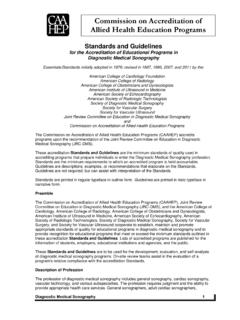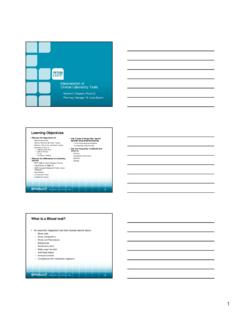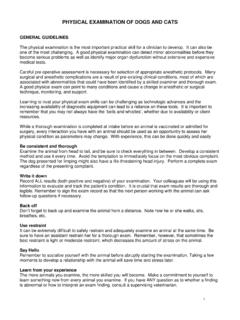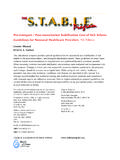Transcription of National Education Curriculum - Joint Review Committee on ...
1 National Education Curriculum Specialty Curricula Abdomen and Superficial Structures Including Introductory pediatric and Musculoskeletal Abdomen and Superficial Structures Including Introductory pediatric and Musculoskeletal Copyright 2016 Joint Review Committee on Education in Diagnostic Medical Sonography (JRC-DMS). All rights reserved. 2 Return to Table of Contents Table of Contents Section I: Biliary .. 3 Section II: Liver .. 19 Section III: Pancreas .. 35 Section IV: Renal and Lower Urinary Tract .. 43 Section V: Spleen .. 67 Section VI: Adrenal .. 75 Section VII: Abdominal Vasculature .. 81 Section VIII: Gastrointestinal Tract (GI) .. 91 Section IX: Abdominopelvic Wall and Cavities .. 101 Section X: Interventional .. 113 Section XI: Organ Transplant .. 117 Section XII: Breast .. 122 Section XIII: Neck .. 133 Section XIV: Prostate .. 140 Section XV: Scrotum .. 144 Section XVI: Musculoskeletal Sonography.
2 149 Section XVII: pediatric Hip .. 154 Section XVIII: Neonatal Brain .. 157 Section XIX: Neonatal Spine .. 166 Abbreviations .. 169 Utilized References .. 172 Abdomen and Superficial Structures Including Introductory pediatric and Musculoskeletal Copyright 2016 Joint Review Committee on Education in Diagnostic Medical Sonography (JRC-DMS). All rights reserved. 3 Return to Table of Contents Section I: Biliary Rationale: The sonographer is required to perform sonographic studies of the abdomen and superficial structures. Thorough knowledge of relational anatomy, physiology, pathophysiology, sonographic technique and appearances is required. The sonographer will determine normal from artifactual or pathologic conditions, modify or extend the scope of the examination as necessary, prioritize differential diagnoses and complete a technical report. 1. Describe the normal anatomy, function, sonographic technique and appearance of the biliary system 2.
3 Correlate clinical indications and laboratory values associated with biliary disease 3. Identify biliary pathology in terms of sonographic appearances, sequelae and associated pathologies 4. Describe associated pathologies and sequelae relative to biliary disease 5. Identify normal and abnormal flow characteristics and waveforms I. Biliary A. Embryology B. Anatomy 1. Gallbladder a. Intraperitoneal b. Three segments i) Fundus ii) Body iii) Neck c. Layers i) Epithelial ii) Muscular iii) Subserous iv) Serosal d. Relational anatomy 2. Biliary Ducts a. Intrahepatic b. Extrahepatic i) Common Hepatic Duct (CHD) ii) Cystic Duct iii) Common Bile Duct (CBD) C. Variants of Normal and Congenital Anomalies 1. Gallbladder a. Hartman s pouch b. Junctional fold c. Phrygian cap d. Septated Abdomen and Superficial Structures Including Introductory pediatric and Musculoskeletal Copyright 2016 Joint Review Committee on Education in Diagnostic Medical Sonography (JRC-DMS).
4 All rights reserved. 4 Return to Table of Contents e. Agenesis f. Duplication g. Hourglass shape h. Intrahepatic i. Left-sided with situs inversus D. Function 1. Gallbladder a. Concentrates and stores and releases bile upon the digestion of a meal 2. Biliary Ducts a. Transport bile 3. Laboratory Values a. White Blood Count (WBC) b. Serum bilirubin; direct, indirect and total c. Serum alkaline phosphatase (ALP) d. Liver Function Tests (LFTs) i) Aspartate Aminotransferase (AST) ii) Alanine Aminotransferase (ALT) iii) Prothrombin Time (PT) iv) Lactic Acid Dehydrogenase (LDH) E. Indications for Examination 1. Pain a. Right upper quadrant (RUQ) pain, epigastric pain b. Right shoulder pain (with inflammation) c. Post prandial pain 2. Positive Murphy s Sign 3. Nausea 4. Vomiting 5. Intolerance to Fatty Foods and Dairy Products 6. Jaundice F. Technique 1. Patient Preparation 2. Transducer Selection 3. Patient Positioning 4. Image Optimization 5.
5 Examination Protocol 6. Examination Limitations G. Sonographic Findings Abdomen and Superficial Structures Including Introductory pediatric and Musculoskeletal Copyright 2016 Joint Review Committee on Education in Diagnostic Medical Sonography (JRC-DMS). All rights reserved. 5 Return to Table of Contents 1. Gallbladder a. Anechoic lumen b. Thin, smooth walls c. Pear shape 2. Biliary Ducts a. Measurement i) Location of measurement ii) Anatomic variants of CBD which may confuse location of measurement iii) Normal diameters Variation H. Pathophysiology 1. Cholelithiasis a. Definition b. Incidence c. Risk factors d. Clinical presentation i) May be asymptomatic ii) Right upper quadrant (RUQ) pain iii) Nausea iv) Vomiting v) Fever e. Sonographic findings i) Acoustic shadow ii) Gravity dependent gallstone movement with change in body position iii) Floating stones secondary to an increase in the specific gravity/viscosity of the bile f. Correlative and/or prior imaging g.
6 Treatment 2. Mirizzi Syndrome a. Definition i) Impacted stone in cystic duct, cystic duct remnant, or gallbladder neck ii) Partial mechanical obstruction of the CHD by compression of inflammatory reaction around impacted stone iii) Sequelae of jaundice, recurrent cholangitis, formation of biliary fistulas, or cholangitis cirrhosis b. Incidence c. Risk factors d. Clinical presentation e. Sonographic findings Abdomen and Superficial Structures Including Introductory pediatric and Musculoskeletal Copyright 2016 Joint Review Committee on Education in Diagnostic Medical Sonography (JRC-DMS). All rights reserved. 6 Return to Table of Contents i) 2-D Pattern of ductal dilatation ii) Doppler for vessel differentiation f. Correlative and/or prior imaging g. Treatment 3. Contracted or non-visualization of gallbladder a. Definition b. Incidence c. Risk factors d. Clinical presentation e. Sonographic findings i) Dependent on etiology The double arc sign, or WES sign (W=wall, E=Echo [stone], S=Shadow) f.
7 Correlative and/or prior imaging g. Treatment 4. Sludge a. Definition b. Incidence c. Risk factors d. Clinical presentation e. Sonographic findings i) Gravity dependent, non-shadowing echoes ii) Fluid-fluid level iii) Gallbladder isoechoic with liver when sludge fills gallbladder lumen iv) Atypical appearances Polypoid mass or pseudotumor Sludge balls v) Correlative and/or prior imaging vi) Treatment 5. Acute cholecystitis a. Definition i) Acute or chronic inflammation of gallbladder b. Incidence c. Risk factors d. Clinical presentation i) RUQ pain radiating to shoulder ii) Biliary colic Abdomen and Superficial Structures Including Introductory pediatric and Musculoskeletal Copyright 2016 Joint Review Committee on Education in Diagnostic Medical Sonography (JRC-DMS). All rights reserved. 7 Return to Table of Contents iii) Palpable RUQ mass iv) Tender right subcostal region v) Fever vi) Nausea vii) Vomiting e. Laboratory findings i) Elevated serum bilirubin ii) Elevated serum transaminase iii) Elevated alkaline phosphatase iv) Elevated WBC f.
8 Sonographic findings i) 2-D Cholelithiasis Diffuse gallbladder wall thickening Halo-sign suggesting subserosal edema Distended gallbladder Positive sonographic Murphy s sign7 Sludge may be present Pericholecystic fluid ii) Doppler Cystic artery and gallbladder wall flow g. Complications i) Empyema ii) Emphysematous cholecystitis iii) Gangrenous cholecystitis iv) Perforation of the gallbladder v) Ascending cholangitis vi) Liver abscess h. Correlative and/or prior imaging i. Treatment 6. Acalculous cholecystitis a. Definition i) Inflammation of gallbladder in absence of cholelithiasis b. Incidence c. Risk factors d. Clinical presentation e. Sonographic findings Abdomen and Superficial Structures Including Introductory pediatric and Musculoskeletal Copyright 2016 Joint Review Committee on Education in Diagnostic Medical Sonography (JRC-DMS). All rights reserved. 8 Return to Table of Contents i) Distended gallbladder ii) Wall thickening iii) Sludge iv) Pericholecystic fluid and/or edema f.
9 Correlative and/or prior imaging g. Treatment 7. Chronic cholecystitis a. Definition i) Recurrent inflammatory changes in gallbladder secondary to infection, obstruction, or metabolic disorders b. Incidence c. Risk factors d. Clinical presentation i) Intermittent RUQ and epigastric pain; may radiate to scapula ii) Intolerance to fatty and fried foods iii) Intermittent nausea and vomiting e. Laboratory findings i) Elevated AST ii) Elevated ALT iii) Elevated ALP iv) Elevated WBC f. Sonographic findings i) Contracted gallbladder with acoustic shadowing from cholelithiasis ii) Thick, echogenic gallbladder wall iii) Sludge may be present iv) Non-contractility or decreased response to cholecystokinin g. Correlative and/or prior imaging h. Treatment 8. Complications of surgical treatment of cholecystitis a. Laparoscopic versus open treatment b. Incidence c. Risk factors d. Clinical presentation i) Fever ii) New or increasing abdominal pain iii) Increased bile drainage iv) Decreasing hematocrit Abdomen and Superficial Structures Including Introductory pediatric and Musculoskeletal Copyright 2016 Joint Review Committee on Education in Diagnostic Medical Sonography (JRC-DMS).
10 All rights reserved. 9 Return to Table of Contents e. Sonographic findings i) Bile leak, biloma, choleperitoneum ii) Subhepatic abscess iii) Hemorrhage iv) Retained stone f. Correlative imaging g. Treatment 9. Hydrops of the gallbladder (mucocele) a. Definition i) Abnormal accumulation of fluid within gallbladder b. Incidence c. Risk factors d. Clinical presentation i) Asymptomatic ii) Palpable RUQ mass iii) Epigastric pain iv) Nausea v) Vomiting e. Sonographic findings i) Markedly dilated gallbladder ii) Thin gallbladder wall iii) Possible stone in gallbladder neck or cystic duct f. Correlative and/or prior imaging g. Treatment 10. Courvoisier s gallbladder a. Definition i) Prolonged complete obstruction of the distal bile duct b. Incidence c. Risk factors d. Clinical presentation i) Possibly asymptomatic ii) Palpable RUQ mass e. Sonographic findings i) Markedly dilated gallbladder ii) Thin walls f. Correlative and/or prior imaging g.









